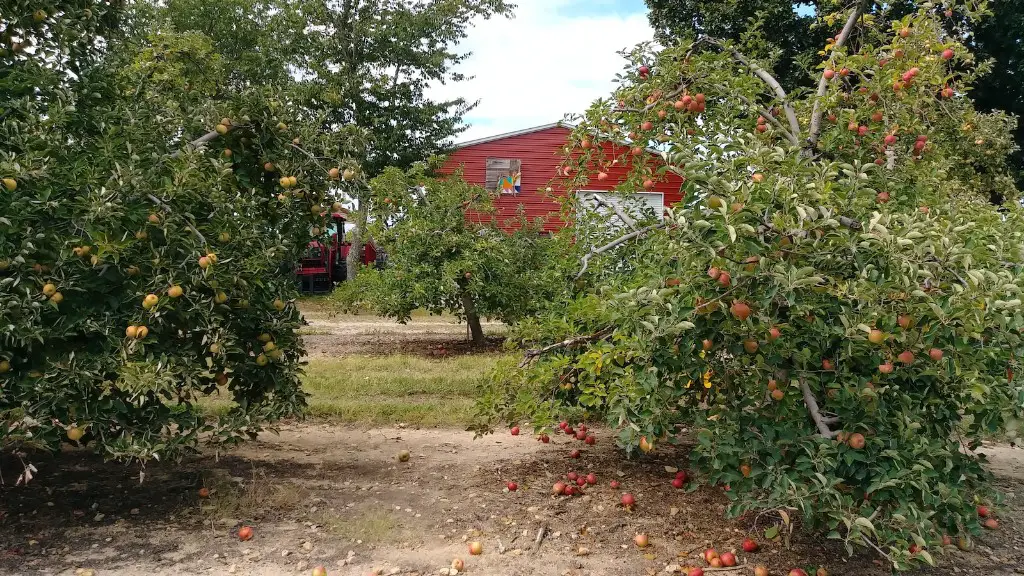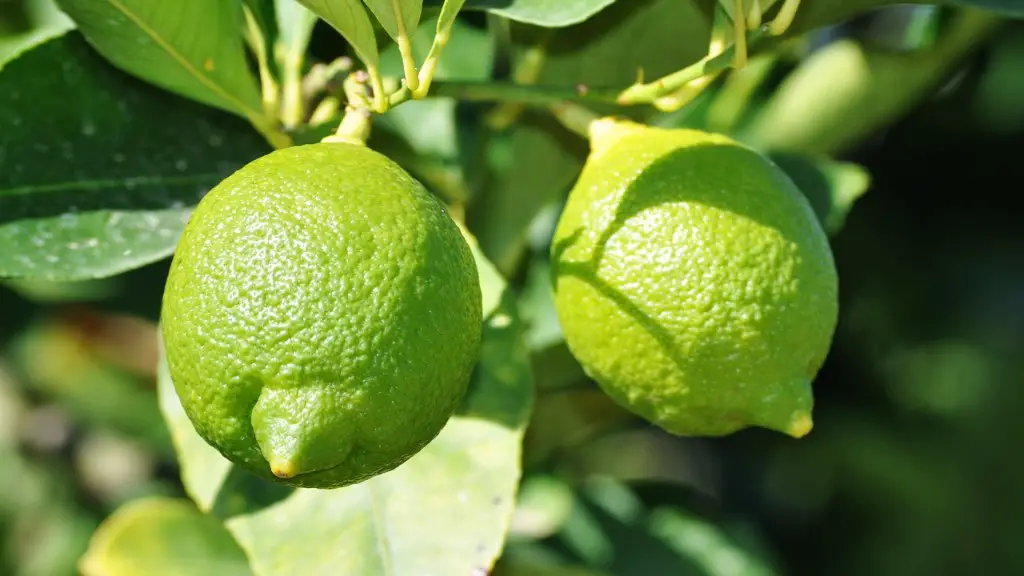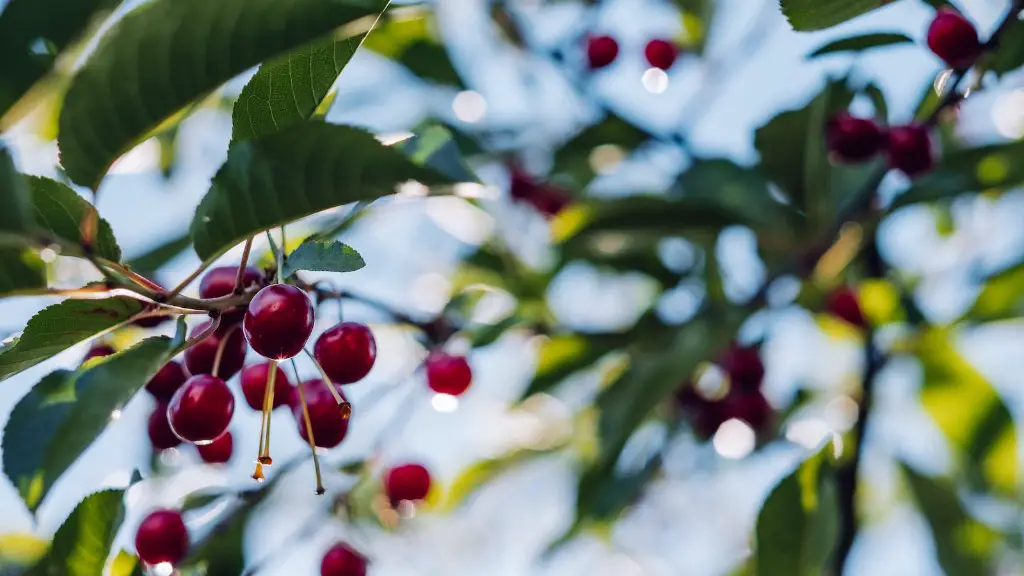Exploring the Reasons Why Apples Fall from Trees Prior to Ripening
Apple trees bear fruit each year, and much of that bounty may drop from the tree before it can ripen. However, understanding why this phenomenon occurs requires an investigation of a few distinct factors affecting the timing of the ripening process. This article will explore why apples may fall from trees before they ripen and discuss why this can be a beneficial trait for an apple tree.
Primarily, apples drop due to uneven distribution of sugars and starches within the fruit. Apples need to accumulate a significant amount of sugar for growth and increased sweetness, as well as storage starches for producing energy when the apple is off the tree. Unbalanced ratios of these two elements can cause apples to drop from the tree prematurely. This can help the tree in two distinct ways: the tree can focus its resources on the most viable apples, and those that fall can provide nutrients to the tree’s soil.
Additionally, pest infestation affects whether apples will drop off before maturation. Some of the most common culprits responsible for an apple’s premature departure are codling moths, plant bugs, and thrips. These pests can advance the ripening process by disrupting the balance of sugars and starches in the apple’s flesh. Preemptive treatments can significantly reduce pest infestations, like orchard sprays, releasing beneficial insects, and utilizing pheromone traps.
Thirdly, the prevalence of diseases, bacteria, and fungal pathogens can increase the likelihood of apples falling from the tree before their ripening. Diseases, such as scab and sooty blotch, can cause apples to turn prematurely, which results in them detaching from the stem before the typical ripening process. This can often be prevented by proper pruning and sanitation, which reduces the likelihood of any pathogen entering into the tree.
Finally, the most often overlooked cause for premature apple dropping is due to injury to the fruits. Mechanical damage to fruit can lead to them ripening earlier than comparable apples. This kind of trauma could be caused by such activities as over-pruning or low-hanging fruit getting caught in passersby. Preventing physical harm to apples is the best way to keep them on the tree until they are ready to be harvested.
Exploring the Benefits of Apples Detaching Early
Despite being an unwelcome experience for many apple orchard owners, dropping one’s apples can garner some potential positives. Primarily, this detaching can provide the tree with an opportunity to efficiently invest resources. When apples drop prior to ripening, the tree is able to divert precious energy towards those that remain, thus ensuring the most delicious and profitable fruit will remain on the tree until harvest.
Secondly, those apples that drop can provide the soil with valuable nutrients. After the apple has been naturally wounded by detaching from the tree, beneficial fungi will break down the cellular structure of the fruit to become more easily absorbed by the tree’s roots. Not only does this reinforce the apple tree, but also every plant of the orchard soils that also benefit from these nutrients.
Thirdly, the platform created by apple falling can allow for the exchange of beneficial organisms such as pollinators and predators. Pollinators, such as native bees and wasps, can take aboard nutrient-rich nectar from the windfall fruit and carry them to other parts of the orchard. Caterpillars and beetles may defecate on these fallen fruits and cycle vital stem-strengthening compounds back into the soil. Ultimately, the fallen apple also provides shelter and nutrition for these species.
Finally, the droppings can be inhabited by beneficial microbes that competitively exclude disease-causing organisms from the tree. The beneficial bacteria will live in the wounds left by the droppings, which prevent the spread of soil-borne diseases that can be catastrophic to an entire orchard.
Understanding the Variations in Why Apples Detach Prior to Ripening
This phenomenon can vary wildly amongst different apple varieties as a result of their DNA and physiological differences. For example, some apple cultivars are bred to be earlier ripening than others. This would mean that the apples will detach from the tree before the others, but they could potentially be the tastiest of the bunch. On the other hand, those that are exceptionally late ripening apples have been found to have a firmer structure and will tend to remain on the tree until they are ready to eat.
This variance is also determined by the environment in which the apple tree is grown. For example, in extremely hot climates, apples may drop prematurely due to heat and water stress. Excessive wind can cause the apples to vibrate and damage the calyx, or the base, of the apple which can result in detachment. On the other hand, if the orchard is consistently misted, the apples will be less likely to detach before ripening.
Weather patterns and temperatures can also affect the likelihood of premature appledrops. A cold spring can reduce pollination success, leaving tiny fruits susceptible to larger apples dropping and damaging them. Other weather calamities, such as hail, frost, and flooding, can also influence the apples to detach prematurely.
Finally, other human factors can be the cause of early apple dropping. If a fruit-harvesting procedure is not done properly, it can result in premature fruit detachment, or it can damage the flanks of the apple, which results in premature ripening and dropping. If managed carelessly, an overabundance of nitrogen fertilizer can encourage the tree to produce more apples than it can handle, thus promoting premature dropping.
The Impact of Premature Apples Dropping
For the apple orchard owners, premature apple dropping can represent a significant setback to an entire season’s yield. If apples are dropping off the tree prior to ripening, their shelf-life will be significantly shorter than their ripe counterparts, requiring immediate sale and reduction in revenue. Additionally, they may not taste as sweet as they would if they were allowed to ripen on the tree.
Furthermore, premature apples represent a greater pest infestation risk because the fruits are weaker and more likely to be infected by a range of potential pests. This susceptibility to pests means that the a orchard worker needs to be extra vigilant to ensure that infestations are not able to spread. This, in turn, requires the implementation of additional monitoring and treatment methods that may prove to be costly.
Finally, any potential droppings can lead to physical injury to any person handling the fruit. If a detached apple strikes someone, it can cause bodily harm, thus making it increasingly difficult for the apple grower to find sufficient labor.
Mitigating the Risks of Apples Detaching from the Tree
There are a variety of approaches that can be implemented to reduce the risk of premature apple dropping. Primarily, determining if stress is the cause of the dropping can be determined by assessing the tree for pests, disease, and various environmental factors. Activating prophylactic practices that are suitable for the local conditions and the variety of apple grown can be extremely beneficial.
Watering and nutrient availability can be an influential factor on fruit health, and a well-structured irrigation regimen during bloom and post-bloom can reduce the likelihood of premature apples dropping. As previously mentioned, proper pruning and sanitation can reduce the potential for disease-carrying pathogens to enter the tree. Additionally, releasing beneficial insects, like the Asian ladybug, can help reduce the chances of pests such as codling moths or thrips infesting the apple tree.
Fungicides can be applied if a disease is present, in order to break the disease cycle and reduce the risk of fruit dropping. Additionally, foliar sprays, such as insecticidesor miticides, can help deter pests from ravaging your apples, so it is important to read labels and follow instructions for safe usage.
Finally, the use of protective coverings for the apples can significantly reduce the risk of subsequent mechanical damage. Nets or bags, when properly fitted, can create a physical barrier from physical damage, as well as reduce the presence of airborne pathogens.
Conclusion
Premature apple dropping is a complex phenomenon that is impacted by a variety of factors, many of which are out of the orchard owner’s control. Because of this, it is imperative that orchard owners are abreast of the potential risks associated with early apple detaching, so they can employ a series of strategies to help prevent it. Through a mixture of preventive measures, orchard owners can protect their apples from premature drop and ensure the most flavorful and long-lasting fruit possible.




